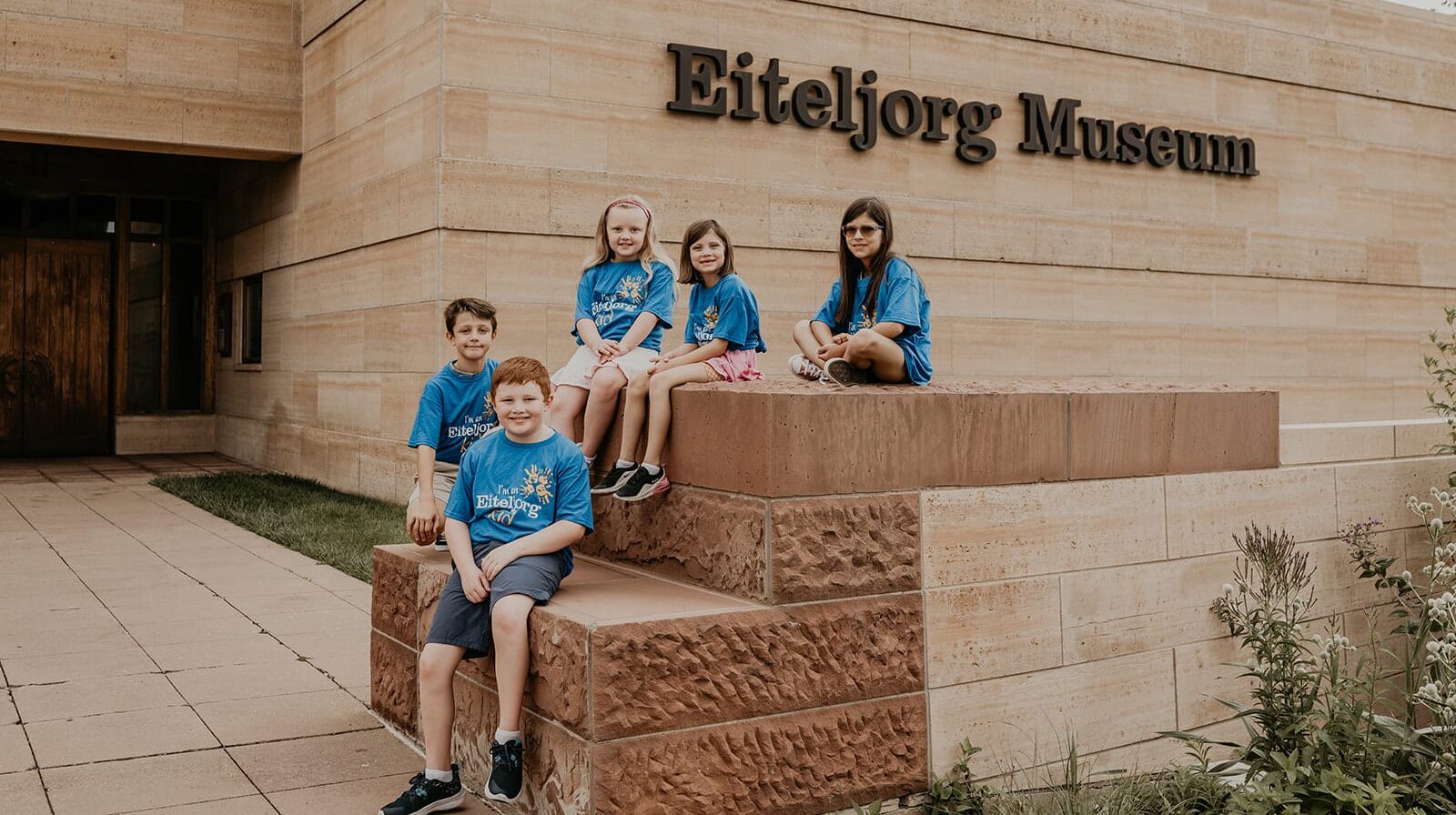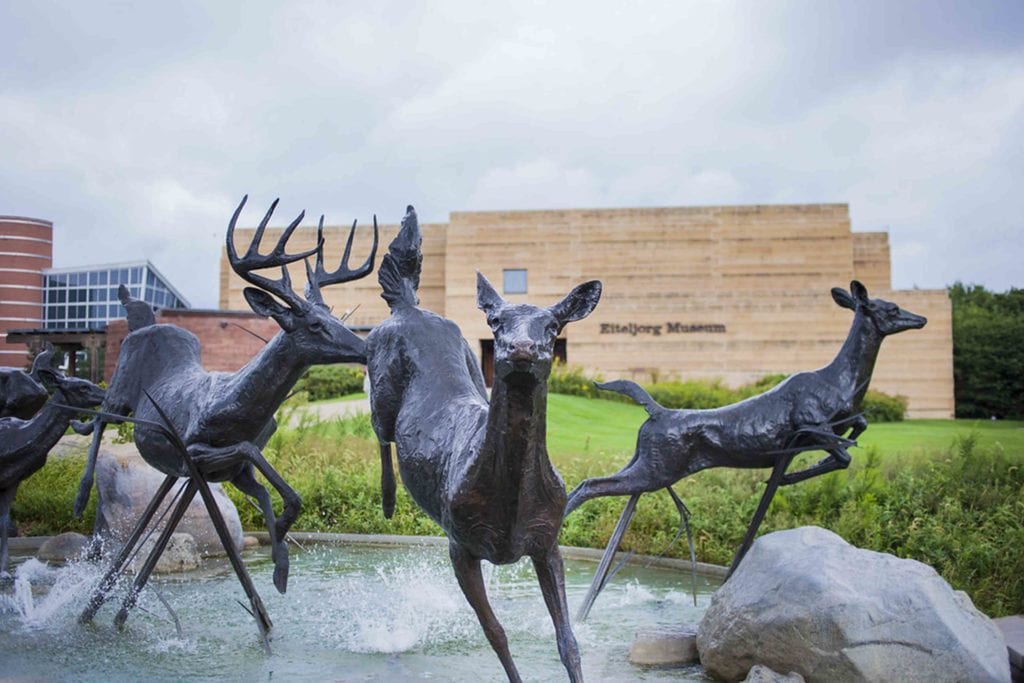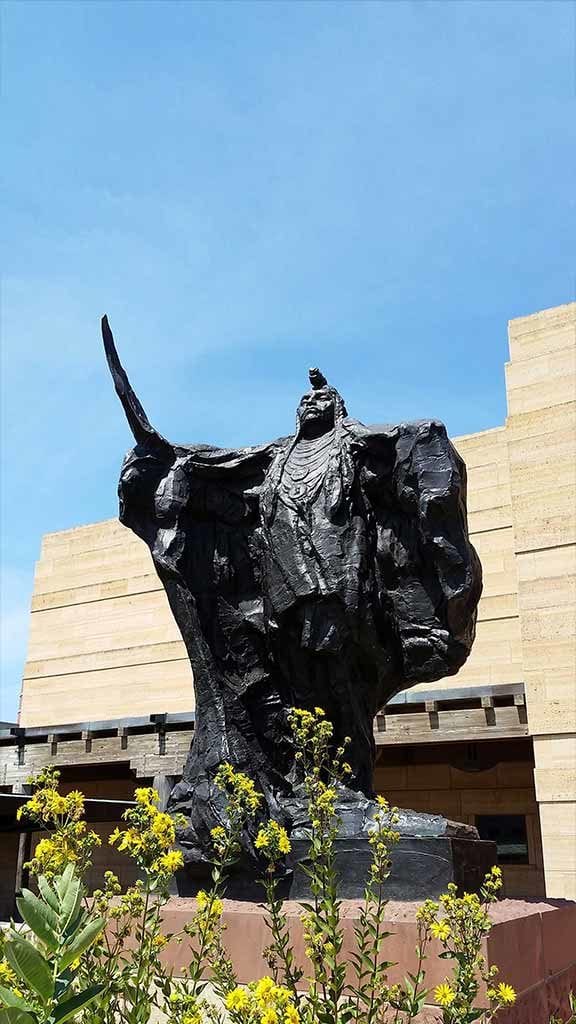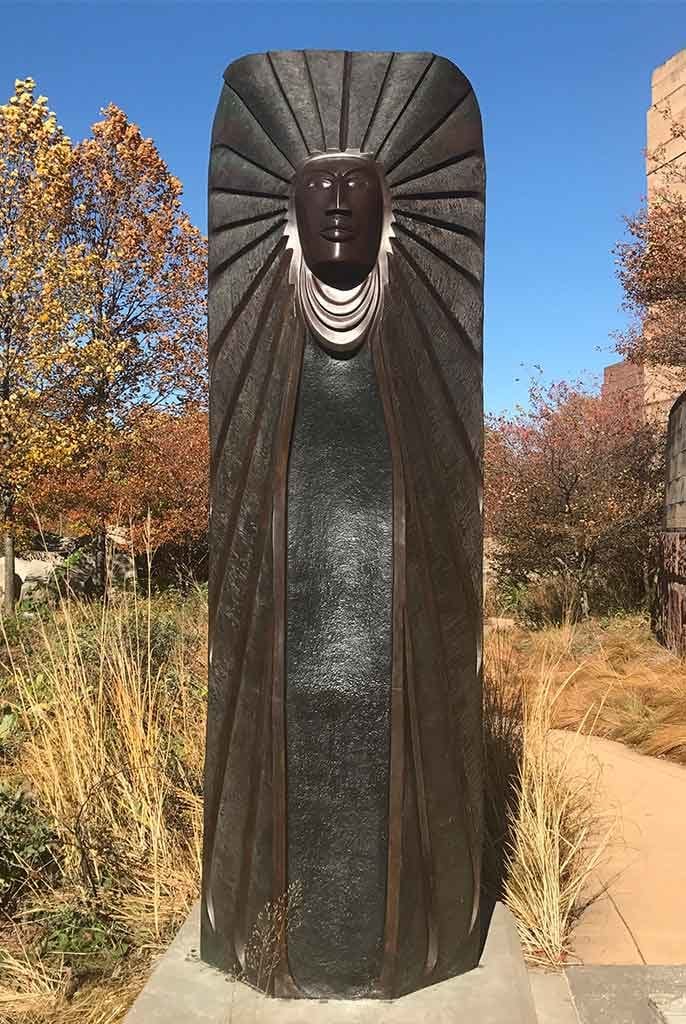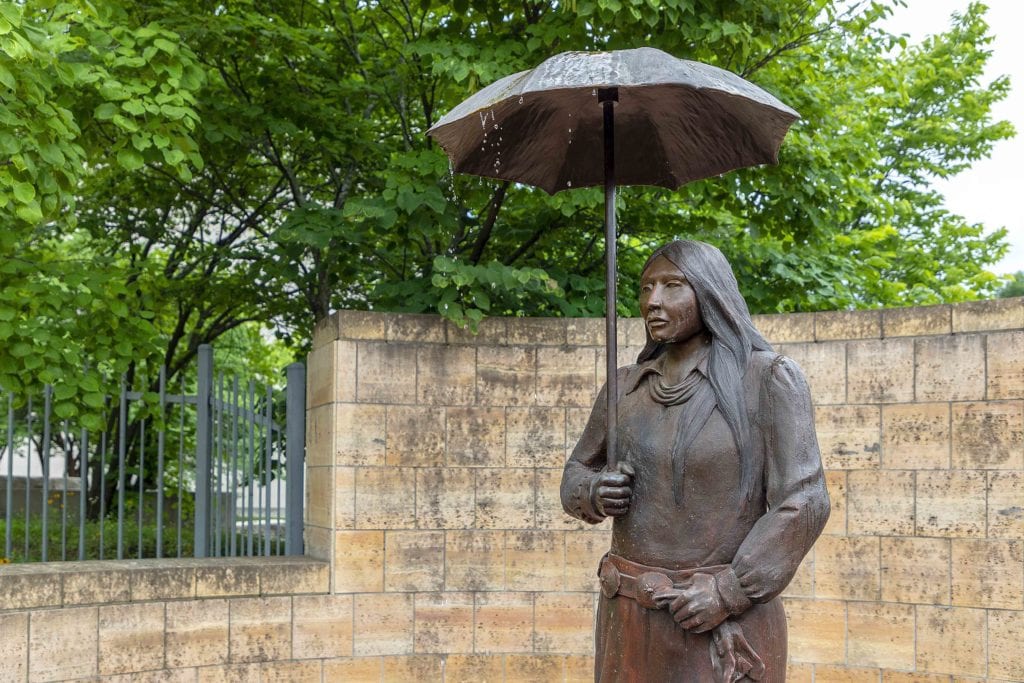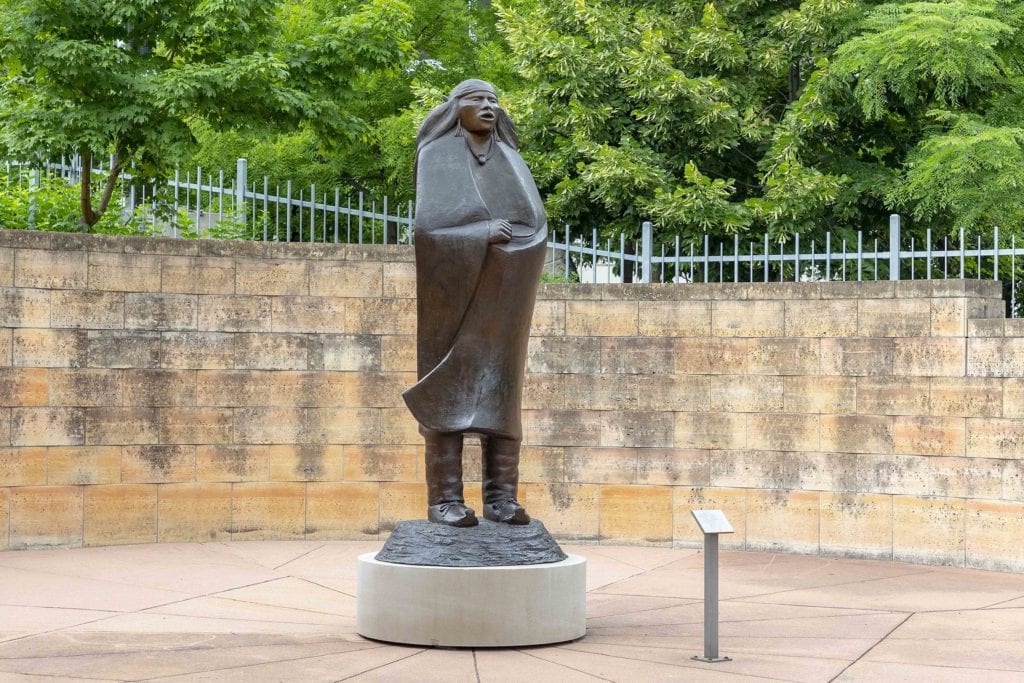Outdoor Spaces
Where Art Meets Nature
There’s a lot to see inside and outside the museum. As you walk the Eiteljorg grounds, you’ll find sculptures, gardens shared with the Indiana State Museum, and outdoor seating for a quiet respite during the day.
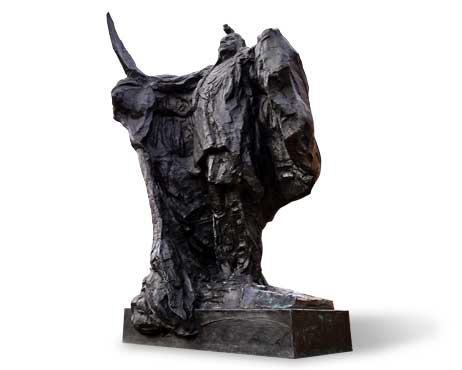
Artistic Beauty on the Grounds
Wander through the gardens, learn about Indiana native plants, and admire the impactful work of sculptors and artists.
What is it: Our outdoor spaces bring nature and art together to capture the essence and stories of the American West and Native America, from the iconic Whitetail Deer sculpture fountain in front of the museum to the impressive statue The Greeting, conveying a gesture of friendship to welcome museum guests.
How to visit: Visit the exhibit Mon-Sat 10 a.m.-5 p.m., and Sun 12 p.m.-5 p.m.
More About This Collection
The Artwork
Wander through our outdoor spaces and admire a wide variety of outdoor artwork from a variety of very talented artists. With the beautiful White River State Park as a backdrop for these cultural masterpieces, you’ll find new meaning in each of these pieces every time you visit.
The Gardens
Art meets nature in the Eiteljorg Gardens which are nestled along the scenic Indianapolis Downtown Canal. Whether you are looking for a quiet respite or the opportunity to learn more about Indiana native plants, the Eiteljorg Gardens are a treat for the senses whatever the season. As you wind your way through the garden paths, you will encounter plants rich in aesthetic appeal and ethno botanical history.
Before you visit, get the map of the grounds and see what they have to offer on your next visit!
Whitetail Deer
Kenneth R. Bunn (born 1938), works to convey a sense of action and movement in his sculptures and clearly succeeded in doing so when he created this dramatic bronze of deer running through a pond for the opening of the Eiteljorg Museum in 1989. A close student of animal anatomy and behavior, the artist masters his work through observation of creatures in the wild. He has traveled throughout the world studying wildlife in natural habitats and at zoos and private preserves. Bunn’s work can be found at museums throughout the country; he is an Academician of the National Academy of Design and a Fellow of the National Sculpture Society.
The Greeting
Renowned artist George Carlson was born in Illinois in 1940 and studied art in Chicago. He is an Academician of the National Academy of Design and a Fellow of the National Sculpture Society. The subject of this work is a Blackfoot man welcoming visitors; he holds an eagle wing fan up in a gesture of friendship. The work is an allegorical expression of welcoming friendship. Carlson has been the subject of numerous exhibitions and publications, is represented in many public and private collections, and has received many awards at major shows across the country.
Wisdom Keepers
Bruce LaFountain was raised on the Turtle Mountain Reservation. He is of Chippewa, French, and Cree descent and often refers to himself as Metis. Drawing on his Native American heritage, he feels like sculpture is a meditative process that allows him to chip away at his materials until the excess is gone and he can see the simple truth and spirituality of his subject. Wisdom Keepers reflects both LaFountain’s heritage and spirituality with the warrior transforming into an eagle.
Southwest Summer Showers
Doug Hyde (Nez Perce, Chippewa, and Assiniboine) was born in 1946, studied and taught at the Institute of American Indian Art in Santa Fe, New Mexico, and is well-known for monumental works in California, Arizona, and elsewhere. He sensitively portrays Native peoples in a way that conveys pride and dignity. He is best known for his work in stone and for bold bronze castings with brightly colored patinas. His work is in the collections of major museums throughout the country, including the Smithsonian Institution. The woman holding the umbrella in this sculpture wears traditional Southwestern clothing and jewelry.
Morning Prayer
Allan Houser was a sculptor and painter who altered expectations of Native American artists in the 20th century. Houser is known as the patriarch of Native American contemporary fine art and is credited with pushing Native American sculpture into the modern era without sacrificing its traditional and enduring quality. Morning Prayer was originally shown as part of the 2001 Eiteljorg Contemporary Art Fellowship (then called the Eiteljorg Fellowship for Native American Fine Art). That year, Allan Houser was awarded the designation of Distinguished Artist posthumously.




